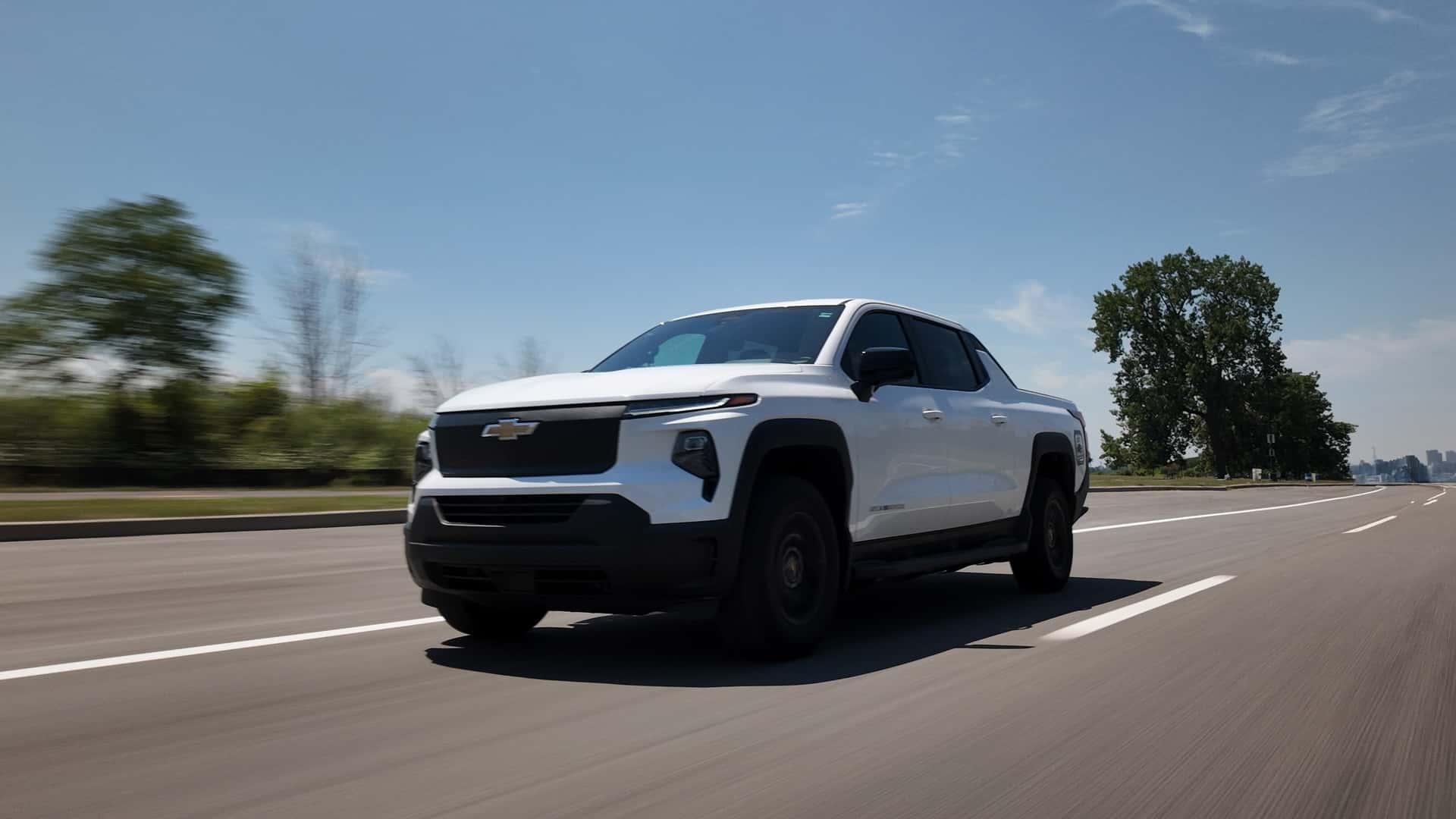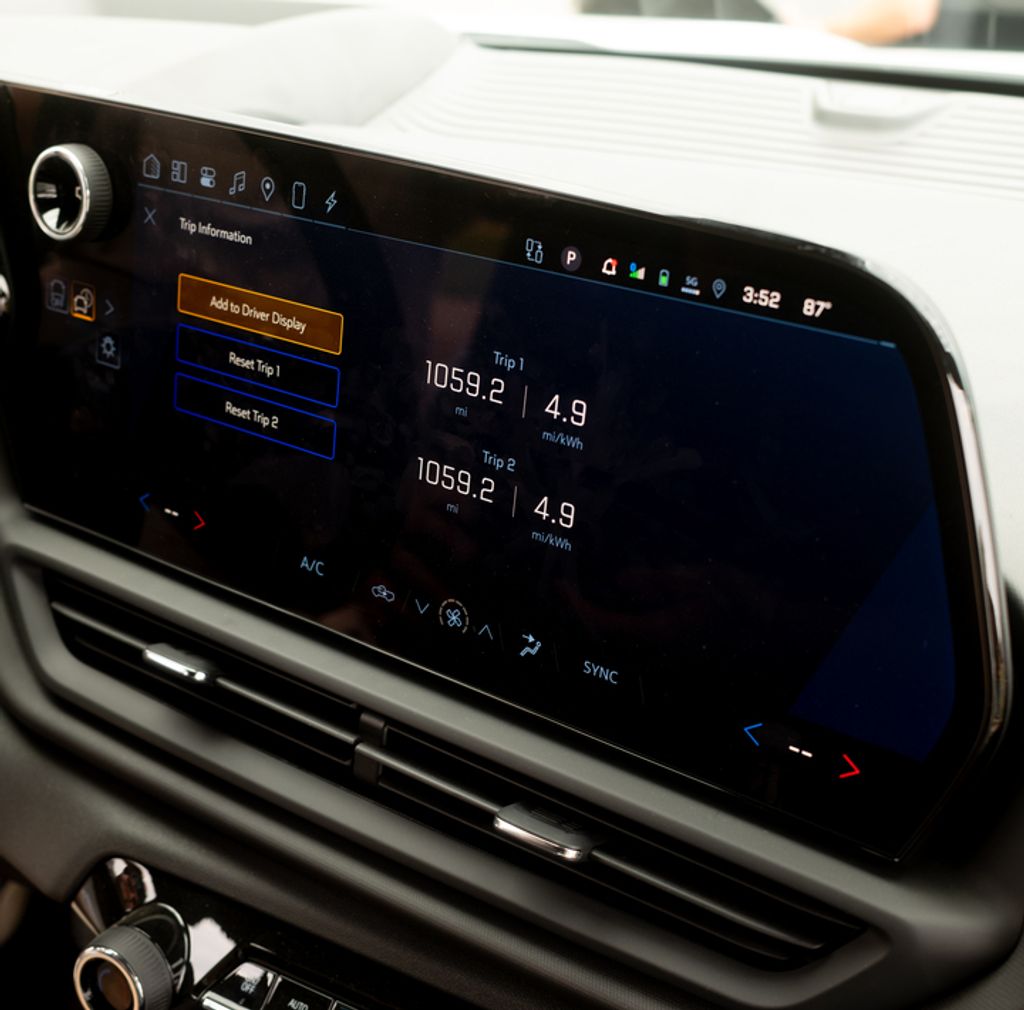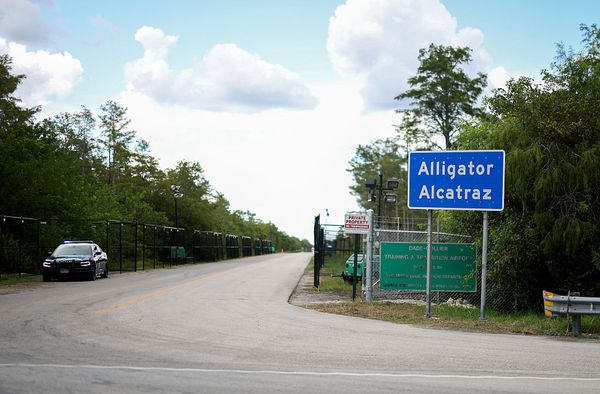
- General Motors engineers just drove the Chevrolet Silverado EV WT over 1,000 miles on a full charge.
- They stuck to 20-25 mph whenever possible, didn't use the climate control and made modifications to reduce rolling resistance and drag.
- The 2026 Silverado EV WT has an EPA range rating of 493 miles.
Would anybody ever need to go over 1,000 miles in an electric car without stopping to charge? Probably not. But could you? A team of General Motors engineers just proved it’s possible in the 2026 Chevrolet Silverado EV Work Truck.
On Tuesday, the automaker said it broke the world record for the longest distance covered in an electric vehicle between charges. A team of engineers set out to determine the theoretical maximum distance they could travel in a fully charged Silverado EV WT, which boasts the automaker’s highest EPA range rating at 493 miles.

Taking turns and driving in one-hour shifts on public roads, a group of 40 GM employees depleted the Silverado EV’s battery over the course of seven days and wound up driving a whopping 1,059 miles. That beats (albeit unofficially) the Guinness Record that Lucid Motors set last month when it piloted an Air sedan 749 miles across Europe.
Now, let’s be clear here: The GM team made some serious compromises that you might not want to commit to in the real world. (We’ll get to how fast—or slow, rather—they drove in a moment.) But there are also some actual lessons here for EV buyers looking to maximize their range.
“We did a lot of things to this truck and drove it in a very specific way, on specific routes, to be able to get some really cool number, right? The things we did—everyone's not going to go out there and do all these things, and they don't need to,” said Jon Doremus, an engineering manager for electrification propulsion calibration who led the project. “But I hope it educates people a little bit more on EVs, and helps them alleviate some of the range anxiety.”
The engineers added a tonneau cover on the truck's bed to help it slice through the air and inflated its tires to their maximum pressure so they’d roll easier. They also removed the spare tire to make this 8,500-lb behemoth of a truck that much lighter.
Basically: some tweaks anybody could do to their truck if they wanted to boost range.

For this specific test, the most impactful vehicle modification was probably the use of worn tires, Doremus told InsideEVs. Since this was a brand-new truck, its sticky rubber would’ve added a lot of rolling resistance.
The choice of vehicle made sense too, because the Silverado EV packs a whole lot of battery. It sports a 205-kilowatt-hour pack that’s about 2-3 times bigger than what you’d find in most EVs. That helps it earn its super-high range rating and overcome the inherent inefficiencies of being a big, beefy truck. (To get a sense of those inefficiencies, consider that the Lucid Air went 70% as far with a battery that’s about half the size.)
It's performed well in previous independent range tests, including one from Edmunds that saw it go 539 miles during a mix of highway and city driving. But a range-optimized Silverado EV is worthless if driven like a maniac. So the engineers rethought their driving habits, too.
Crucially—and this is a big caveat for anybody who’d like to replicate this sort of efficiency themselves—the GM team stuck to 20-25 mph as much as possible. As a reminder: While your gas car gets better MPG on the highway, the opposite is true for EVs. They burn through their state of charge more quickly the faster you go.
Doremus said they did some driving on faster roads, too.
They also didn’t use the climate controls and chose to conduct the test during the summer, when an EV doesn’t need to spend energy warming up its battery. And they agreed to drive smart in other ways, like gaining momentum on downhills and not pinning the throttle or slamming the brakes too much. Doremus said he saw those mindset shifts impact range in real time; as participants cycled through and traded tips, they got measurably better at driving efficiently.
And it’s those kinds of habits—slowing down, chilling out—that are probably the clearest takeaway for EV owners looking to boost range. Doremus said the test proves that drivers can do a lot to eke more miles out of their EVs, even without fussing endlessly over their tire pressure or the aerodynamic drag of their windshield wipers.
“Maybe that doesn't mean you drive to work doing 25 miles an hour, but maybe it means you take a route that is 45 miles an hour instead of 70. And then all of a sudden you can charge half as many times in that week,” he said. “Especially when you're at lower speeds, if you're okay with the windows down and not running the climate control, that's big. And anyone can do that.”
Contact the author: Tim.Levin@InsideEVs.com







